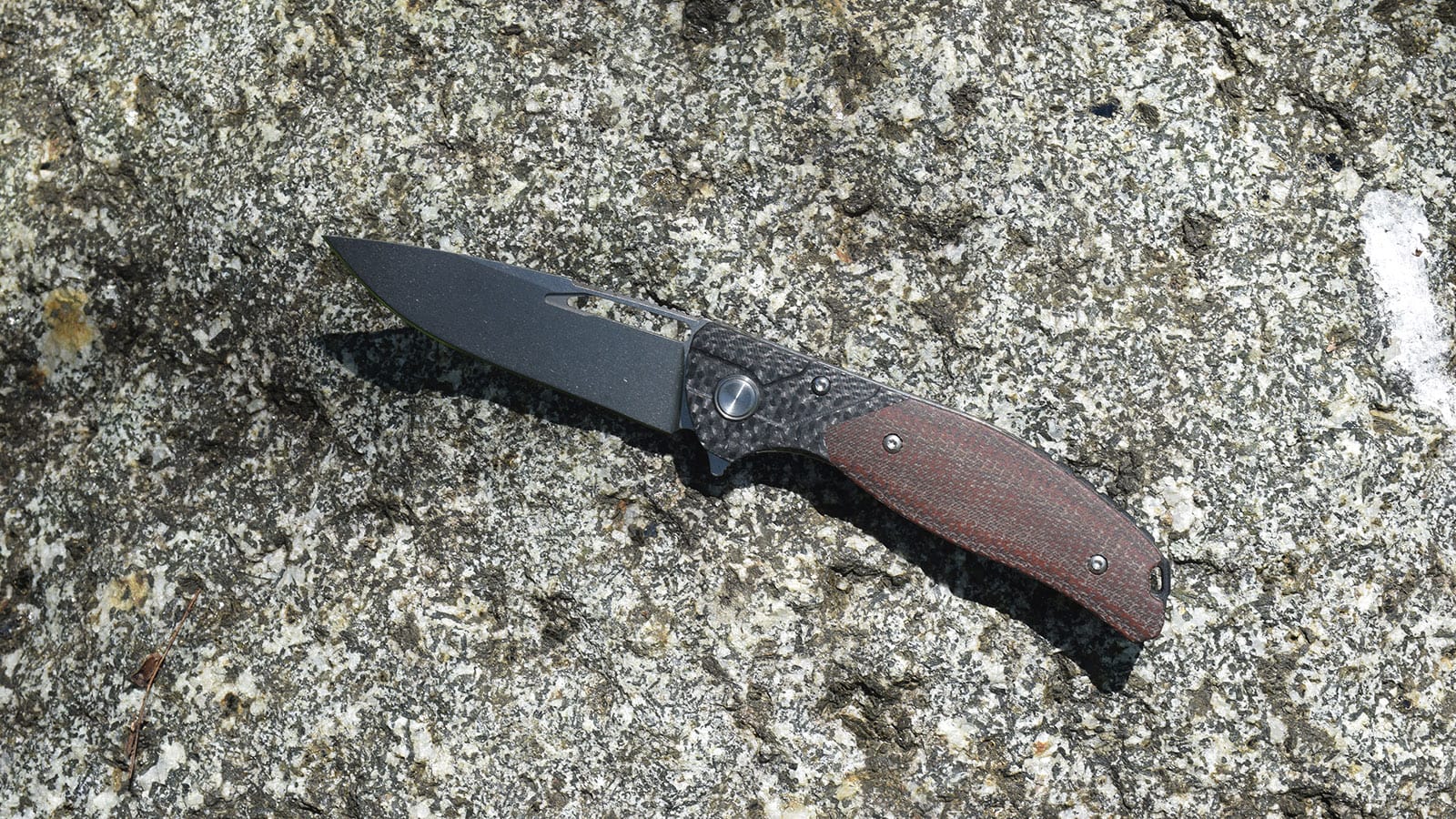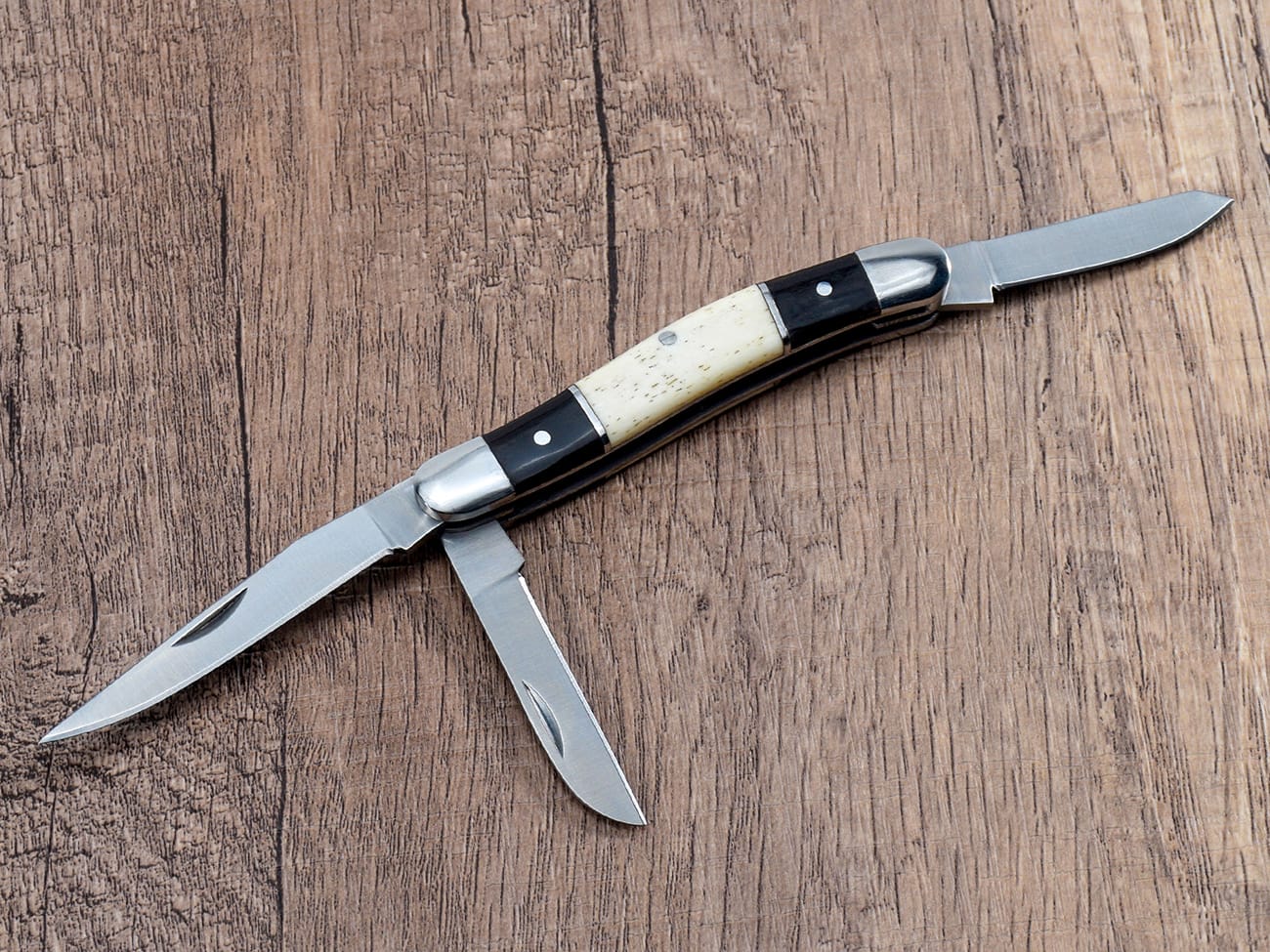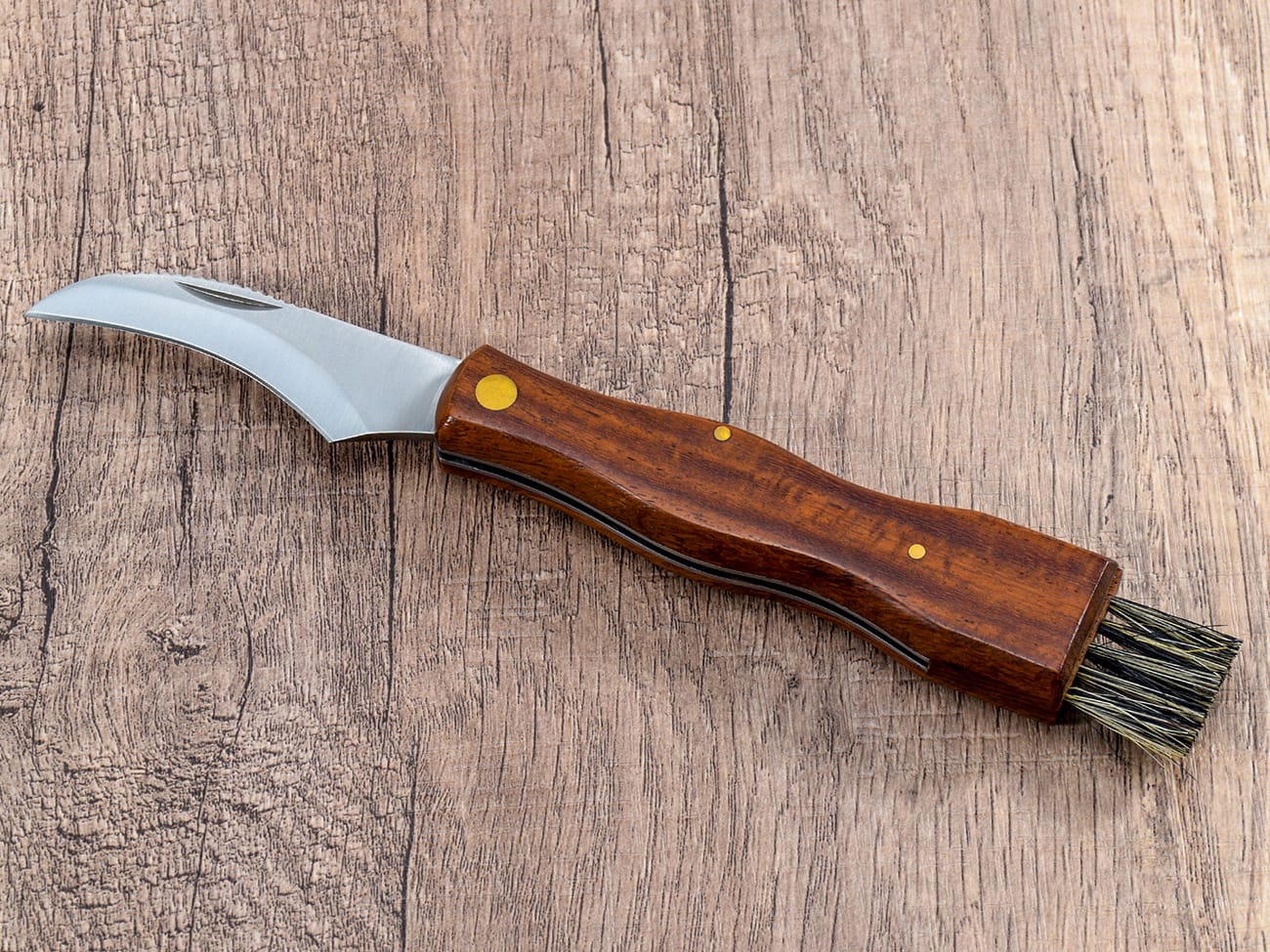Ви втомилися боротися з тупим кишеньковим ножем? Незалежно від того, любите ви активний відпочинок, любитель DIY або просто хтось, хто цінує добре доглянутий інструмент, знати, як заточити кишеньковий ніж, є важливою навичкою. У цьому вичерпному посібнику ми розповімо вам про процес заточування вашого кишенькового ножа, гарантуючи, що ваше вірне лезо буде гострим як бритва та готовим до роботи. Від вибору правильних інструментів для заточування до освоєння різних технік, ми допоможемо вам. Отже, давайте зануримося в це та дізнаємося, як підтримувати ваш кишеньковий ніж у першокласному стані!
Чому важливо заточувати ваш кишеньковий ніж?
Перш ніж ми заглибимося в тонкощі заточування ножів, давайте зрозуміємо, чому так важливо тримати свій кишеньковий ніж гострим:
- Безпека: Гострий ніж насправді безпечніший у використанні, ніж тупий, оскільки для різання потрібно менше зусиль.
- Ефективність: гостре лезо полегшує та прискорює різання.
- Довговічність: регулярне заточування подовжує термін служби вашого ножа.
- Ефективність: лезо, яке добре обслуговується, краще виконує різні завдання.
Тепер, коли ми знаємо про важливість гострого ножа, давайте дізнаємося, як досягти та зберегти ідеальне лезо.
Які інструменти потрібні для заточування кишенькового ножа?
Щоб ефективно заточити кишеньковий ніж, вам знадобляться відповідні інструменти. Ось кілька основних елементів:
- Точильні камені (бруски) різної зернистості
- Масло або вода для хонінгування (в залежності від типу каменю)
- Шкіряний ремінь (необов’язково, але рекомендовано)
- Чиста тканина для протирання леза
- Захисні рукавички (необов'язково, але рекомендовані для новачків)
Як правильно вибрати точильний камінь?
Вибір відповідного точильного каменю має вирішальне значення для досягнення найкращих результатів. Ось що вам потрібно знати:
- Зернистість: камені мають різну зернистість, від грубої (близько 200) до наддрібної (8000+).
- Матеріал: звичайні матеріали включають водяні камені, масляні камені та алмазні камені.
- Розмір: виберіть камінь, який достатньо великий, щоб вмістити лезо вашого ножа.
Для більшості кишенькових ножів гарною відправною точкою є комбінований камінь з грубою стороною (приблизно 400 зернистості) і тонкою стороною (приблизно 1000 зернистості).
Які є різні способи заточування кишенькового ножа?
Існує кілька способів заточити кишеньковий ніж, кожен з яких має свої переваги. Давайте розглянемо найпоширеніші методи:
- Заточка бруска
- Заточка керамічного стрижня
- Електричні точила
- Керовані системи заточування
- Хонінгування сталевим стержнем
У цьому посібнику ми зосередимося насамперед на заточуванні бруска, оскільки це найбільш універсальний і традиційний метод.
Як підготувати ніж до заточування?
Перш ніж почати заточувати, виконайте такі дії, щоб підготувати свій кишеньковий ніж:
- Ретельно почистіть лезо водою з милом.
- Повністю висушіть ніж, щоб запобігти іржавінню.
- Огляньте лезо на наявність будь-яких пошкоджень або сколів.
- Визначте кут леза (зазвичай 15-20 градусів для кишенькових ножів).
Який покроковий процес заточування кишенькового ножа?
Тепер давайте зануримося в сам процес заточування:
1. Намочіть свій точильний камінь
Якщо ви використовуєте водяний камінь, замочіть його у воді приблизно на 10-15 хвилин перед використанням. Масляні камені не вимагають замочування, але під час заточування вам знадобиться нанести масло для хонінгування.
2. Знайдіть прямий кут
Тримайте ніж під правильним кутом до каменю. Більшість кишенькових ножів мають кут 15-20 градусів на кожну сторону. Якщо ви не впевнені, почніть з кута 20 градусів і відрегулюйте за потреби.
3. Почніть з грубої сторони
Почніть з грубої сторони бруска. Помістіть край леза до каменю під правильним кутом і проведіть ним по каменю широкими рухами. Підтримуйте постійний тиск і кут протягом усього ходу.
4. Рівномірно загострити обидві сторони
Повторіть процес з обох сторін леза, чергуючи сторони після кожні кількох рухів. Це забезпечує рівномірне заточування та запобігає утворенню задирок з одного боку.
5. Перехід до більш дрібної крупи
Після того, як ви встановили нову кромку з грубим каменем, переходьте до більш дрібного зерна. Це покращить край і зробить його гострішим.
6. Перевірте чіткість
Періодично перевіряйте гостроту свого леза. Звичайним тестом є спроба розрізати аркуш паперу. Якщо він ріже чисто, ви на правильному шляху.
7. Завершіть за допомогою Strop
Щоб отримати надгострий край, закінчіть, закріпивши лезо на шкіряному ремені. Це відполірує край і видалить залишки задирок.

Добре доглянутий кишеньковий ніж із гострим лезом — це задоволення у використанні, він з легкістю справляється з різними завданнями.
Яких поширених помилок слід уникати під час заточування кишенькового ножа?
Коли ви дізнаєтеся, як заточити свій кишеньковий ніж, зверніть увагу на ці типові підводні камені:
- Нерівномірний кут: підтримання постійного кута має вирішальне значення для рівномірного загострення.
- Застосування надто сильного тиску: нехай камінь виконує роботу; надмірний тиск може пошкодити лезо.
- Нехтування чищенням каменю: Забитий камінь не заточуватиметься ефективно.
- Надмірна заточка: не видаляйте більше металу, ніж необхідно.
- Ігнорування запобіжних заходів: Завжди відходьте від себе та використовуйте захисне спорядження, якщо необхідно.
Як часто потрібно точити свій кишеньковий ніж?
Частота заточування залежить від того, як часто ви використовуєте свій ніж і для яких цілей. Як загальне правило:
- Легке використання: заточуйте кожні 2-3 місяці
- Помірне використання: загострювати щомісяця
- Інтенсивне використання: Sharpen щотижня або раз на два тижні
Пам’ятайте, що регулярне хонінгування може збільшити час між повними заточками.
Які поради щодо підтримки гострого краю?
Щоб ваш кишеньковий ніж залишався гострим між заточуваннями:
- Регулярно використовуйте хонінгувальну сталь, щоб вирівняти кромку.
- Зберігайте ніж належним чином, щоб захистити лезо.
- Чистіть і висушуйте ніж після кожного використання.
- Використовуйте ніж на відповідних поверхнях (уникайте скляних, керамічних або металевих).
- Розгляньте можливість використання точила для ножів для швидкого підправлення.
Чи можна точити зубчасті кишенькові ножі?
Так, ви можете точити зубчасті кишенькові ножі, але це вимагає іншого підходу:
- Використовуйте керамічний стрижень або конічний точильний камінь.
- Заточуйте кожну зазубрину окремо.
- Зосередьтеся на скошеній стороні зубців.
- Будьте обережні, щоб зберегти зубчастий малюнок.
Які є альтернативні методи заточування кишенькових ножів?
Хоча традиційним вибором є точильні камені, є й інші варіанти:
- Системи керованого заточування: забезпечують постійні кути для новачків.
- Електричні точила: швидко і легко, але можуть видалити більше металу.
- Керамічні стрижні для заточування: чудово підходять для підправки та збереження краю.
- Алмазні пластини: міцні та ефективні, особливо для більш твердих сталей.
Як дізнатися, що ваш кишеньковий ніж потребує заточування?
Зверніть увагу на ці ознаки, які вказують на те, що ваш ніж потрібно заточити:
- Труднощі з плавним розрізанням паперу
- Ковзання або ковзання під час різання
- Видимі надрізи або закочені краї на лезі
- Підвищене зусилля, необхідне для рутинних завдань різання
Яку роль відіграє тип сталі в заточуванні ножів?
Різні види сталі вимагають різного підходу до заточування:
- М’які сталі (наприклад, 420HC): легше заточувати, але вони можуть швидко втратити край
- Твердіші сталі (наприклад, D2 або S30V): складніше заточити, але довше тримає край
- Нержавіюча сталь: як правило, легше обслуговувати, але може бути складніше заточити
Розуміння типу сталі вашого ножа може допомогти вам вибрати правильний інструмент і техніку заточування.
Як продовжити термін служби свого кишенькового ножа?
Щоб зберегти свій кишеньковий ніж у відмінному стані:
- Регулярно чистіть його
- Змастіть шарнір і рухомі частини
- Зберігайте в сухому місці
- Використовуйте його за призначенням
- За потреби загострити та відточити
Яких заходів безпеки слід дотримуватися під час заточування кишенькового ножа?
Безпека завжди має бути вашим головним пріоритетом:
- Завжди обрізайте подалі від свого тіла
- Використовуйте захисні рукавички, якщо ви не впевнені у своїй техніці
- Закріпіть точильний камінь, щоб уникнути ковзання
- Звертайте увагу на гострий край, коли протираєте або перевіряєте лезо
- Тримайте своє робоче місце чистим і добре освітленим
Як ви можете визначити, чи досягли ви належного гострого краю?
Справді гострий ніж повинен:
- Розрізайте папір без зусиль
- Легко збривайте волосся з руки (обережно!)
- Помідор розріжте, не м’ячучи
- Відчуйте «липкість», коли обережно проводите великим пальцем по краю (будьте дуже обережні!)
Пам’ятайте, що для досягнення гострого краю потрібні практика та терпіння.
Висновок: опанування мистецтва заточування кишенькових ножів
Навчитися заточувати кишеньковий ніж — це цінна навичка, яка добре послужить вам у різних ситуаціях. З правильними інструментами, техніками та практикою ви можете підтримувати своє лезо в ідеальному стані, гарантуючи, що воно завжди буде готове, коли вам це знадобиться. Пам’ятайте про ці ключові моменти:
- Виберіть правильний інструмент для заточування свого ножа
- Зберігайте постійний кут під час заточування
- Перехід від грубої до дрібної крупи
- Тренуйтеся регулярно, щоб покращити свою техніку
- Надайте пріоритет безпеці протягом усього процесу заточування
Дотримуючись цього посібника та приділяючи час тренуванням, ви незабаром навчитеся доглядати за лезом свого кишенькового ножа. Гострий ніж не тільки ефективніший, але й безпечніший у використанні. Отже, беріть кишеньковий ніж і точильний камінь і починайте вдосконалювати свої навички вже сьогодні!Внутрішнє посилання: для тих, хто віддає перевагу варіантам, які не потребують обслуговування, перегляньте наш вибір кишенькових ножів із міцними сталевими лезами D2, які довше зберігають лезо.




